Healthy Nutrition Bar Guide
Written by:
Suzanne Weaver-Goss

Looking for a different guide? Browse them all HERE.
When I was a young mother there was no such thing as healthful bars of any kind, let alone nutrition bars! These days, there are a million different ones available at health food stores, drug stores, and even gas stations. Different bars fit different diet trends: Paleo; high protein/low sugar; athletic fuel (high carb); gluten free; whole foods; raw foods; macrobiotic; etc. It’s amazing how much the bar market has evolved since the 1970s, when I started paying attention to food and nutrition!
People of all dietary needs and preferences have come to rely on bars as an easy way to get some nutrition while on the run. My son, Graham, is a personal trainer. Through talking with him and spending time at the gym myself, I’ve learned that a lot of fitness-oriented people love bars. And I see why—if you eat the right bar after a workout, you feel great.
Since nutrition bars are so popular, we asked you, our readers, which bars you wanted us to review. Then I went and did some ingredient research and taste testing. If bars are a regular part of your diet (and/or your kids’), read on to learn which ones are Good Stuff, Okay Stuff, Sneaky Stuff, and just plain Bad Stuff. (Oh, and if you want to make bars yourself, here’s my favorite recipe.)
My Top Pick for Best Nutrition Bar
Primal Kitchen
I eat Primal Kitchen bars most often, but my pick for the best bar for most people is actually Larabar. The ingredients are super basic, and even my grandchildren love them.
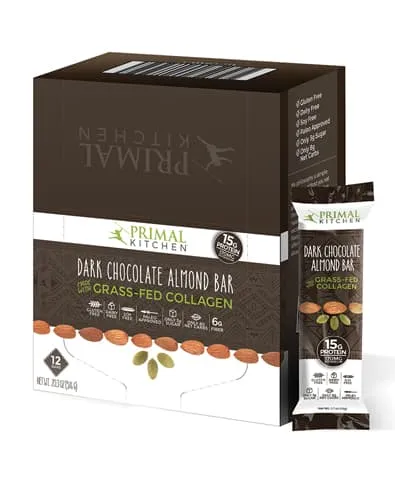
Bad Bar Ingredients to Avoid
As you probably guessed, there’s a lot of questionable stuff out there in the nutrition bar world. Here are some of the ingredients that raise red flags for me:
- Soy ingredients are popular in many nutrition bars as a source of protein (like soy protein isolate) and product-enhancing additives (like soy lecithin). Soy is problematic for many reasons: non-organic soy is likely genetically modified; many soy ingredients are highly processed; soy can be estrogenic; soy can be difficult to digest; and soy is a common allergen. I avoid soy except in some traditional forms, like tempeh and miso, and I recommend that you avoid the more processed, modern versions of it, especially if they’re not organic.
- Non-organic dairy, eggs, and meat, which are all sources of ingredients you can find in many bars, are problematic because conventionally raised animals are typically exposed to higher levels of agricultural chemicals, environmental toxins, hormones, and antibiotics.
- Peanut plants are really good at taking up toxins from soil, so non-organic peanuts (and ingredients derived from them, like peanut butter and peanut flour, which you’ll find in many bars), are usually more toxic than their organic counterparts.
- Casein and casein derivatives (like calcium caseinate and sodium caseinate) are cheap, highly processed and readily available sources of milk-derived protein. They can be contaminated from the source (see non-organic dairy, above) and processing. Also, high levels of these proteins can interfere with mineral absorption in the body.
- Added sweeteners, like corn syrup, are often highly refined, meaning they add sugar without any redeeming nutrients.
- Maltodextrin is a common carbohydrate in mainstream sports nutrition products because it’s technically a complex carb, but can be absorbed quickly, giving the body an energy boost. It’s also cheap and readily available. I don’t like it because it’s highly processed, can be derived from problematic sources (like wheat or corn), acts like more refined sugars in the body, causes digestive problems in some people, and can actually have dehydrating effects (which is exactly what it’s not supposed to do).
- Artificial sweeteners like sucralose (Splenda) have a lot of negative research data against them, and the ones that have been around the longest tend to have the worst reputation. But there’s also “evidence” to defend their continued use in foods. I know people who are sensitive to artificial sweeteners– they get headaches from even the smallest doses—and that’s evidence enough for me to avoid them and suggest that you and your kids do the same. Like sugar alcohols (below), artificial sweeteners are also problematic because they can make sugar cravings worse– because you aren’t digesting real sugar, your brain isn’t getting satiety cues, so the sugar craving rages on.
- Sugar alcohols like xylitol, maltitol and erythritol are supposed to be safer, more natural alternatives to artificial sweeteners—they provide sweetness with few calories and are derived from natural sources. But of course you can’t have your cake and eat it, too! Sugar alcohols are often highly processed, can cause digestive problems and headaches, and they can backfire by perpetuating sugar cravings. They can also induce an insulin response just like regular sugars.
- Added oils are often of poor quality, and one of the more common oils—canola—is extra problematic. Non-organic canola is usually genetically modified. Even organic canola oil is the product of a lot of processing, involving chemicals and high temperatures that can compromise the fatty acids, even hydrogenating some.
- “Natural” flavors are often anything but natural, even if they’re organic! They are usually highly processed and can have a lot of concerning additives that are not listed separately. Be especially wary of bars with flavors that are trying to mimic other foods, like cookies, cakes, and pies.
- Added vitamins and minerals are common in bars that are trying to seem more nutritious than they really are, and they’re usually of unknown origin and quality. Many added nutrients can’t even be absorbed by our bodies. You’re best off getting vitamins and minerals from whole food sources. (Here’s more on my feelings about vitamins.)
Good Bar Ingredients to Look For
The best bars are basically those you could make in your kitchen with ingredients that are readily available at your local grocery or health food store. When I was reviewing ingredients, I looked for:
- Real, whole foods like nuts, seeds, and meat (popular in some of the Paleo friendly bars).
- Organic and non-GMO ingredients, especially when it comes to peanuts and animal-based ingredients.
- Carbohydrates from whole-food ingredients like grains, nuts, and fruit.
- Added sweeteners should be as unrefined and high-nutrient as possible, like coconut sugar and honey.
What’s the Healthiest Kind of Protein in Bars?
Protein ingredients are tricky because even natural ones tend to be highly processed. Ideally, the protein in your diet is from whole-food sources like organic meats, dairy, nuts, seeds, or beans, so you don’t need bars as a major protein source. That’s my two cents. But I know that some people are on high-protein diets or are trying to use high-protein bars to recover from workouts. So here are my tips for finding the best protein ingredients in nutrition bars:
–>For animal-based proteins, look for organic meat and cold-processed whey. Beef collagen (a.k.a. gelatin) is an increasingly popular animal-based protein right now. You’ll find it in Good Stuff like the bars from Primal Kitchen. Collagen tends to be easy to digest and has a lot of potential health benefits. The best stuff currently available is from grass-fed cows in Brazil. (I do I wonder if the cows are 100% grass fed, if their food is organic, and what kind of processing is involved to extract the collagen from the bones and other tissues, but that’s a topic for another day!)
–>For plant-based protein, skip soy-derived protein, even if you’re not allergic or sensitive to soy; even organic soy protein isolate is highly processed. Protein from sprouted brown rice is a good choice if you’re not concerned about the arsenic controversy and can tolerate grains. Pea protein is also popular, and it doesn’t raise any red flags for me. One bar company, Grow Protein, is using protein from watermelon seeds; I call these bars Good Stuff.
You’ll notice below that I’ve linked a bunch of ingredients to Thrive Market. Thrive is a Costco-meets-Whole-Foods-meets-Amazon model, with hard-to-find healthful foods delivered, for free, at steeply discounted prices. I encourage you all to give it a try!
Good Stuff
Bearded Brothers Bars
These small/batch bars are all organic and contain just a handful of ingredients. Definitely a good choice for packaged snacks.
Epic Bar
This Paleo bar is the original meat, fruit, and nut bar. I bought one and gave it to my son to try, because I’m not big on meat. He said it was good. If you’re looking for animal protein combined with fruit and nuts, then this is your bar!
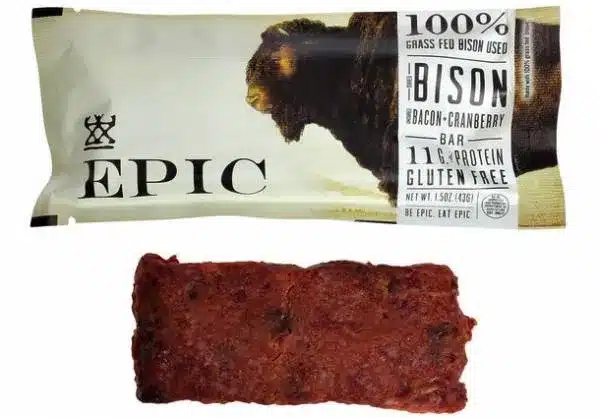
Go Macro
This was one of my favorites for taste and ingredients, but Maia doesn’t like it because it has brown rice syrup, which, like other rice products, can have elevated levels of arsenic. It was delicious and it’s organic with real food ingredients. I tried the Morning Harvest bar with apples and walnuts. With 15 grams of sugar, it’s very sweet, but some of that sugar is from the fruit ingredients. I loved the Thrive flavor– it has ancient seeds and is sweetened with coconut sugar and only has 6 grams of sugar. Every ingredient is organic and it had 7 grams of protein. As an old macrobiotic student, I really liked this one; you can decide how you feel about brown rice syrup and sprouted brown rice protein.
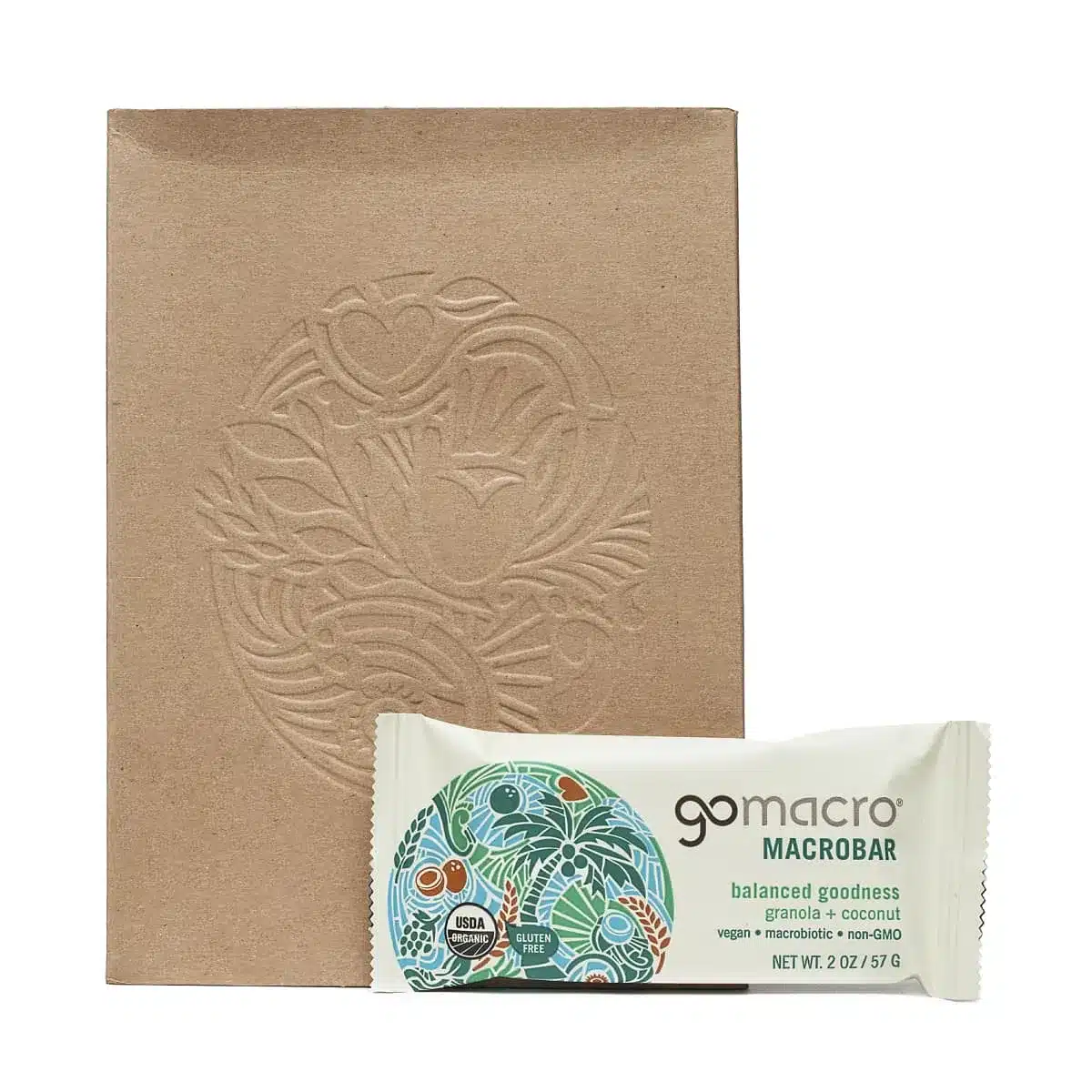
Grow Protein
This line of bars is from Go Raw, an online resource for the raw-food lifestyle, including great recipes. The Grow Protein bar is the only protein bar using watermelon seeds as a source of protein, with 12 grams of plant-based protein in each bar. They come in four flavors and each one is made from eight organic ingredients or fewer. I tried the Lemon Zest. It is sweet from the dates and contains 11 grams of sugar, but the protein helps balance out the sweetener. These bars are especially a good pick for those of you looking for a grain-free option.
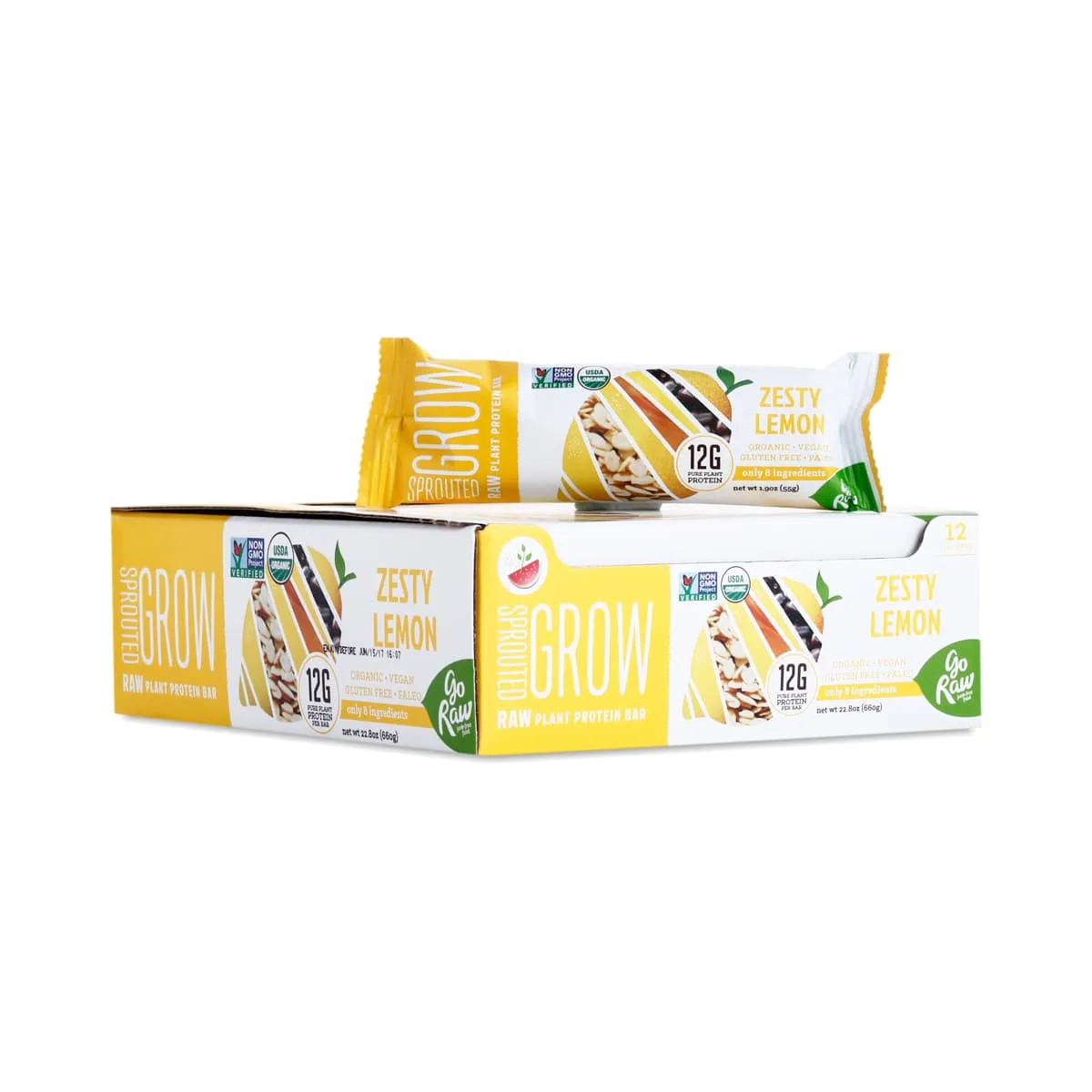
Lara Bar
Reading the ingredients on Lara Bar wrappers is refreshing because there are only a few ingredients, and they are all just food! I tried the Cashew Cookie one and it is very sweet because it’s just dates and cashews. It was actually too sweet for me, but it’s a good choice to satisfy a sweet craving; there are 18 grams of sugar in one bar. The Apple Pie flavor has apples, dates, raisins, almonds, and walnuts. I love the fact that there is no processed sugar and no weird ingredients. However, most of them are not organic, so I wouldn’t be comfortable eating the ones that aren’t organic everyday, especially with apples as an ingredient. Lara Bar’s Organic with Super Foods line is the best choice. I tried the Hazelnut, Hemp, and Cacao flavor, and it was delicious. My 18-month-old grandson loved the date and cashew bar.
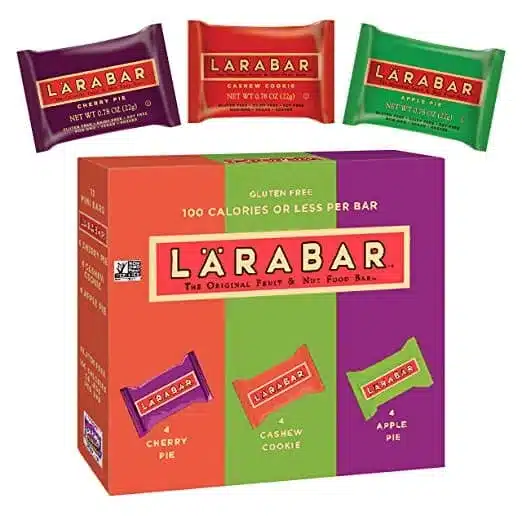
Perfect Bar
I like that these bars are made mostly from real-food ingredients, and most of the ingredients are organic. Although these bars are Good Stuff, they aren’t totally perfect—they do use vegetable oils (olive and sunflower), so if you’re avoiding added oils, these wouldn’t be a good choice. They also use honey rather than fruit for sweetener, so if you’re avoiding added sweeteners, then choose another bar (these have 13-18 grams of sugar per bar). They are not dairy free or grain free and contain nonfat dry milk powder. But overall, they are Good Stuff, and I love their inspiring story.

Primal Kitchen
These are definitely Good Stuff, but only if you’re not a vegan or vegetarian. Primal Kitchen’s bars are also Paleo approved. Not only are they delicious, but also packed with 15 grams of protein and just three grams of sugar, from honey. The protein is from the collagen of grass-fed Brazilian cows, equaling more collagen than a cup of bone broth. Like Raw Rev bars, they also have a pre-biotic fiber (isomalto-oligosaccharide, or IMO) derived from cassava root (a.k.a. tapioca). I’m not a big fan of concentrated prebiotic fibers—they can cause digestive issues, and I think we should get prebiotics from their whole-food sources—but overall I’d call Primal Kitchen bars Good Stuff.

Raw Rev Glo
These bars are made from high-quality ingredients and are packed with protein (11 grams) while having only two to three grams of sugar per bar. The only downside to their super-food blend is that it contains non-organic peanuts. But otherwise, all ingredients are organic and there are no added sweeteners in most of the Raw Rev Glo flavors. I tried the Peanut Butter Dark Chocolate bar, which had 3 grams of sugar due to the chocolate; the other flavors have no added sweetener. Like the Primal Kitchen bars, these ones have the prebiotic fiber IMO, which I’m not crazy about, but overall I’m calling these bars Good Stuff.

Rickaroons
The company calls these “energy bars that taste like dessert,” and I agree. Aside from being delicious, Rickaroons are made from the kind of healthy, wholesome ingredients that I would use in my own kitchen. They’re organic, vegan, gluten free, Paleo friendly, and sweetened with coconut palm nectar. These are a slow-burning fuel, so they provide a nice lift without a sugar crash. Rickaroons come in several flavors– Megaroon, Chocolate Blonde, Mint To Be, Mocha, and seasonal varieties. They have 9-10 grams/sugar per ‘roon–all from from healthy sources. I’m no fat-phobe, but these guys do pack a whopping 20 grams of that in each cookie–which is great for my picky and skinny grandson, Wolfie!
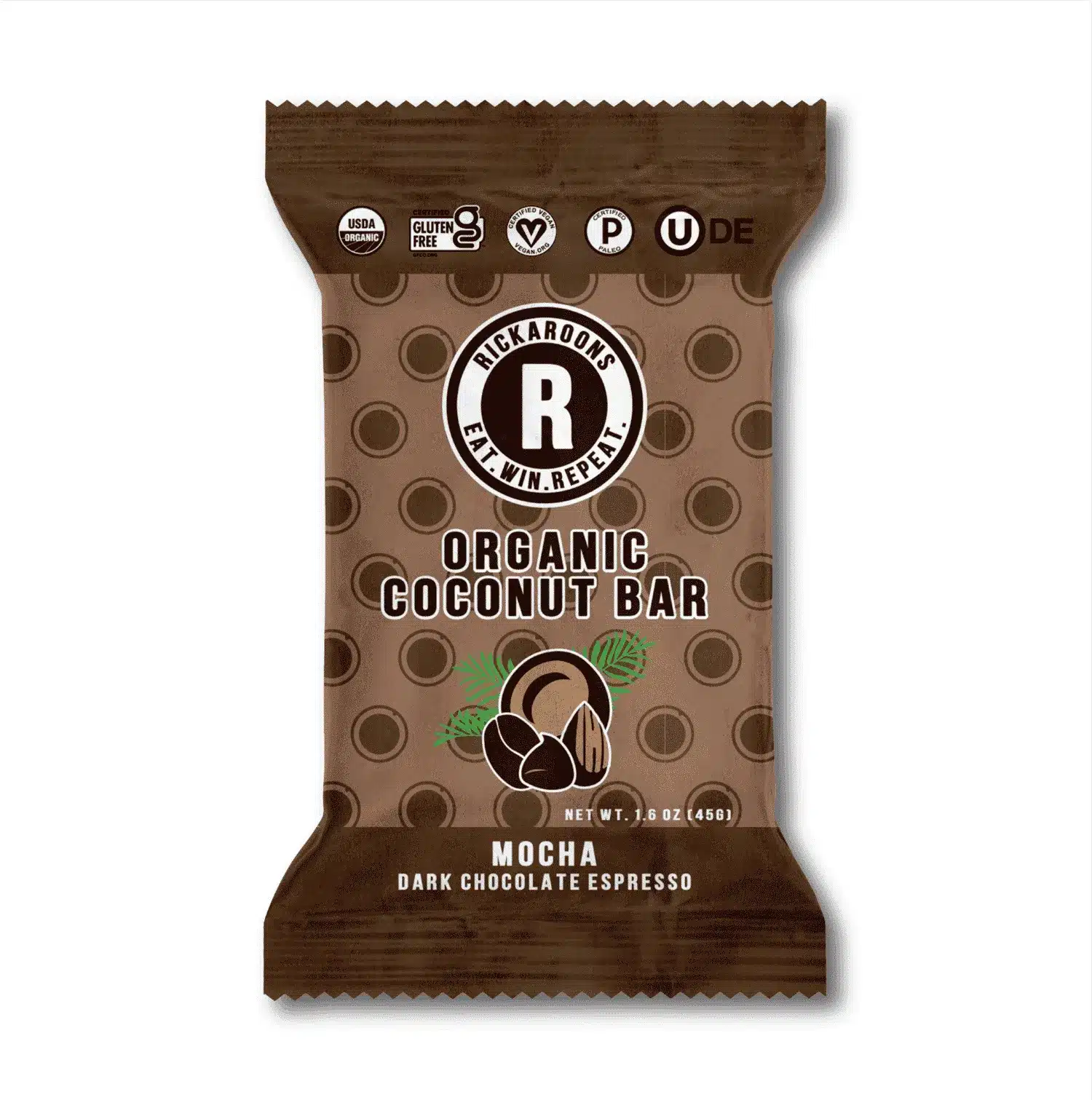
Okay Stuff
Green Plus Energy Bar
These bars were difficult to review because there are a lot of ingredients. Most of the ingredients look okay, and many are organic. There are some soy ingredients. The other issue is many flavors have 23 or 24 grams or sugar, but other ones have only six grams. I’m calling the flavors with less sugar Good Stuff.
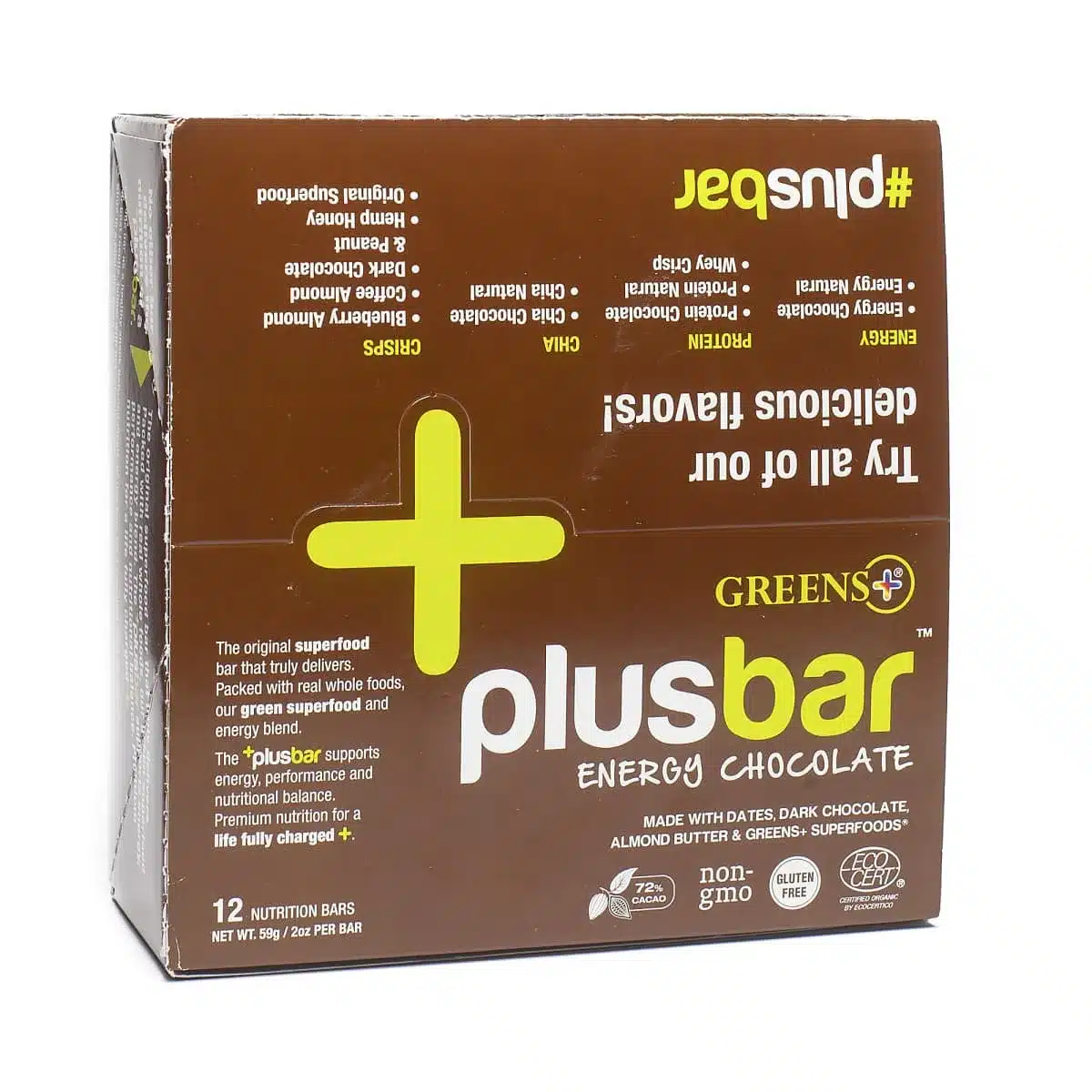
Health Warrior
At only 5 grams of sugar per bar, these are lower in sugar than most others. If you’re watching your calories, you’ll also like that these have only 100 calories per bar. They are definitely not the most delicious bars I tried. I like that they use real-food ingredients, but not everything is organic, and they use brown rice syrup and agave syrup as sweeteners–both of which are controversial.
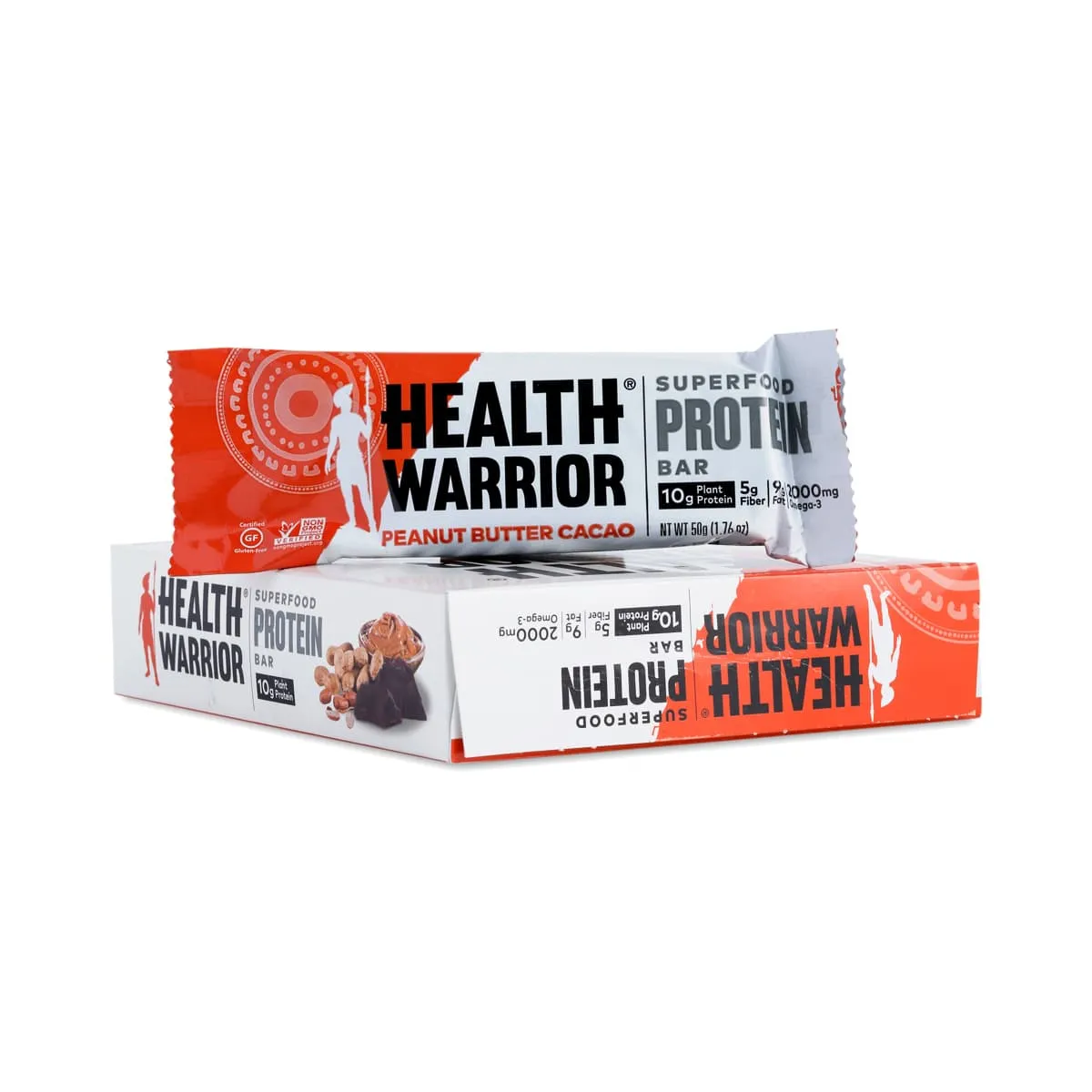
Lola Bar
These are granola bars and the ingredients are real food. They are gluten free and contain no GMO’s. Because nothing is organic, I call these Okay Stuff. They contain 13-14 grams of sugar and are sweetened with honey.
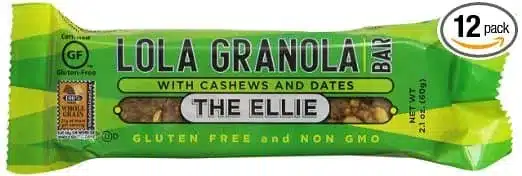
RX Bar
This one is one of my son’s favorites because of the higher protein content (12 grams). I had one of these bars when I was famished after a workout, and it really did hit the spot. I like that these are made with real food and don’t contain any weird ingredients or processed sugars. My only concern is that nothing is organic; they use egg whites, which, like other animal-based foods, ideally would be organic.
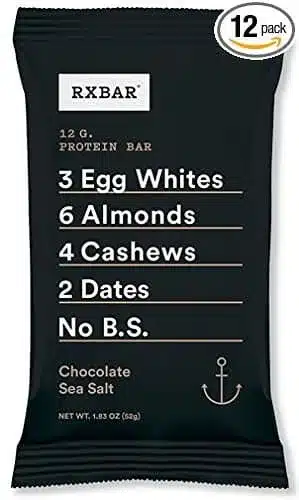
Bad Stuff
Unfortunately, what we’re listing here is just a small sample of the bad bars out there. In some ways, all of these could be called “Sneaky Stuff,” since anything that calls itself an “energy” or “nutrition” bar is positioning itself as a healthful food. Still, the brands below tend to be even worse than the ones you’ll find under the “Sneaky” tab.
Nugo Bars: These are made with some questionable ingredients, including soy protein isolate and soy fiber, which are both highly processed. These bars also contain condensed milk. I would not recommend these, even as a treat. They do have an organic line, but the protein is still from soy.
PowerBar: They were some of the very first bars on the market, and some of their products are non-GMO Project Verified. But when I took a closer look, I was shocked by all of the highly processed, low-quality ingredients. For protein, they rely on combinations of soy, casein and whey ingredients. I looked at three different peanut butter flavored products, and all had non-organic peanut ingredients. In the peanut butter flavor of their PowerBar Performance Energy bar, sugar is the first ingredient (they call it their “carbohydrate blend”), including maltodextrin. They also use added vitamins and minerals of unknown origin and quality. The chocolate peanut butter flavor of their PowerBar ProteinPlus bar has soy protein isolate and soy lecithin, “natural flavor”, and sucralose, a sugar alcohol. The peanut butter chocolate chip flavor of the PowerBar Harvest Energy bar has added sugar from “cane invert syrup” and brown rice syrup, fractionated palm kernel oil, “natural” flavors, and soy lecithin. Needless to say, I didn’t sample any of these bars!
ThinkThin makes several different kinds of bars. I looked at their Chunky Peanut Butter High Protein Bar, and the first red flag was “0g sugar”—instead of any natural sugar or other carbohydrate ingredients, they use maltitol, a sugar alcohol. The whopping 20 grams of protein per bar comes from questionable soy protein isolate, calcium caseinate, and whey protein isolate. In addition to processed, non-organic soy ingredients, there are non- organic peanuts and peanut flour, as well as “natural” flavors and added canola oil. Sadly, I don’t have anything nice to say about these bars!
Sneaky Stuff
Clif Bar: The original Clif Bar Energy Bars were not as bad as I thought they would be; when I first saw organic ingredients, I was intrigued. But in the Crunchy Peanut Butter bar I looked at, they use soy protein isolate, soy flour, and soy nuts, “natural” flavors, and added vitamins and minerals. Also, the peanuts and peanut flour are not organic, even though they start with organic ingredients (including organic peanut butter). If you want good Clif Bars, look for their Kit’s Organic Fruit + Nut line, which is kind of like organic Lara Bars. My grandsons love Clif’s ZBars, and while these are organic, they contain soy products as well as cane sugar–and lots of it!
Kind Bar: Kind makes a lot of different types of bars. They are delicious and are definitely better than most candy bars (I compared a Hershey almond bar to a chocolate-and-nut Kind Bar, and at 19 grams of sugar, Hershey has much more than Kind’s 5 grams!). But I’m not a fan of the added sugars (from glucose syrup, white sugar, and honey), and some of the flavors have much more sugar than others (Blueberry Pecan has 9 grams of sugar and Almond and Apricot has 10 grams). These are okay as a treat, but I wouldn’t call them “nutrition” bars because they don’t have a lot going for them when it comes to health benefits.
Luna Bars: Luna calls their products “Whole Nutrition Bars” and I do like that they use a lot of organic ingredients, are non-GMO, and gluten free. But a closer look reveals that “whole nutrition” is misleading. To get the nutrition profiles and flavors they’re going for, they use a lot of non-whole foods like soy protein isolate, soy lecithin, whey protein concentrate, and “natural” flavors. They also use added sugars, added oils, added fiber, and added vitamins and minerals. And as I mentioned, there are several soy ingredients in them. So these bars, although mostly organic, are also made of a lot of processed stuff.
ProBar: I tried the Peanut Butter Chocolate Chip flavor of the ProBar Meal bar, and I loved the taste, but one bar has 21 grams of sugar! Some of that sugar is from fruit ingredients (dates, dried pineapple, and dried papaya), but the rest comes from added sweeteners (brown rice syrup—first ingredient, molasses, and dried cane syrup). These sweeteners are not the worst—they’re better than refined cane sugar—but that’s still too much sugar for one bar. ProBars have the non-GMO seal, although none of the ingredients is organic. I give them some points for having a decent amount of protein (10 grams) and fiber (6 grams). But they also use canola oil. ProBar Meal bars are better than a bad meal, but I wouldn’t eat them on a regular basis, especially with so many better bar options out there.
Quest Bar: These were easy to review because they have relatively few ingredients. Quest Bars are Sneaky Stuff because Quest makes itself out to be a company on a health-enhancing mission but uses highly processed, non-organic ingredients in their bars. The big dose of protein in their bars comes from a mix of milk protein isolate and whey protein isolate. They add soluble corn fiber to reduce the “net carbs” and use a combo of sugar alcohol (erythritol), artificial sweetener (sucralose—a.k.a. Splenda), and stevia for sweetness. The taste mostly comes from “natural” flavors (how natural can the flavor be in the a S’mores bar?). In the peanut flavors, the peanut ingredients are not organic. They also use palm oil, and some bars have xanthan gum and cellulose gum, which are highly processed and problematic for some people.


Suzanne, Certified Holistic Health Coach
Note: This article contains affiliate links or sponsored content, which means that if you make a purchase, we may earn a commission. We only recommend products that meet our strict standards for non-toxicity and that we use (or want to use!) ourselves. Thank you so much for supporting the brands that make Good Stuff!
Enjoying this guide?
Join our list of 60K families who rely on our free guides covering everything from milk to mattresses! Plus get access to exclusive deals.
Related Posts
Healthy Store Bought Oat Milk Guide 2024
42 Ways to Have a Healthy 2024
What to Do in Dry January: An Idea for Every Day of the Month
Healthy Thanksgiving Recipes
-
Do you have any recommendations for nut-free nutrition bars/snack bars?
Thanks! -
Check out Stokka bars. My new fav!
-
I like pie

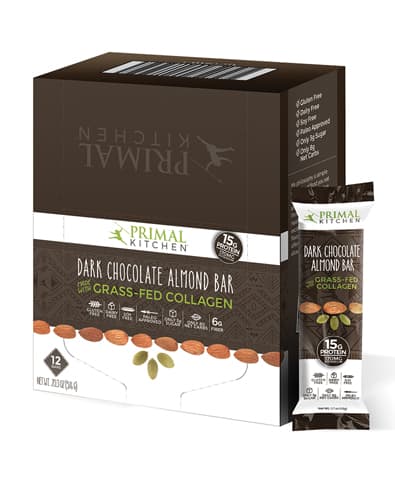
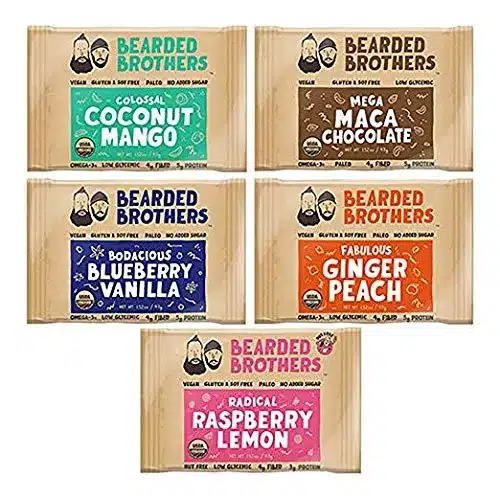

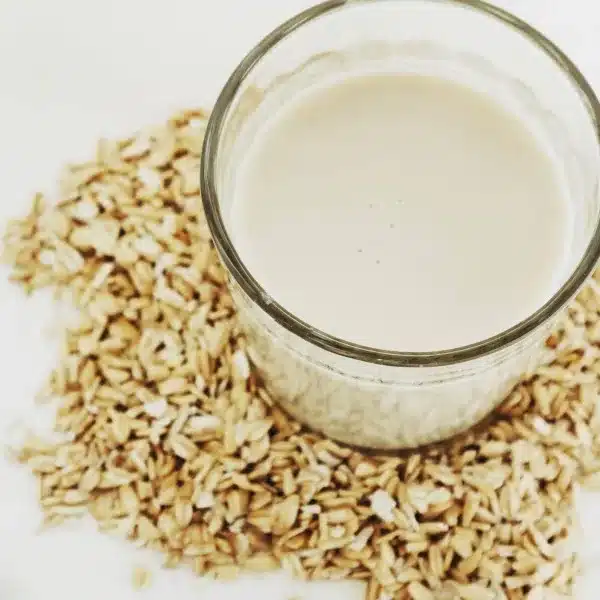



Leave a Reply
You must be logged in to post a comment.